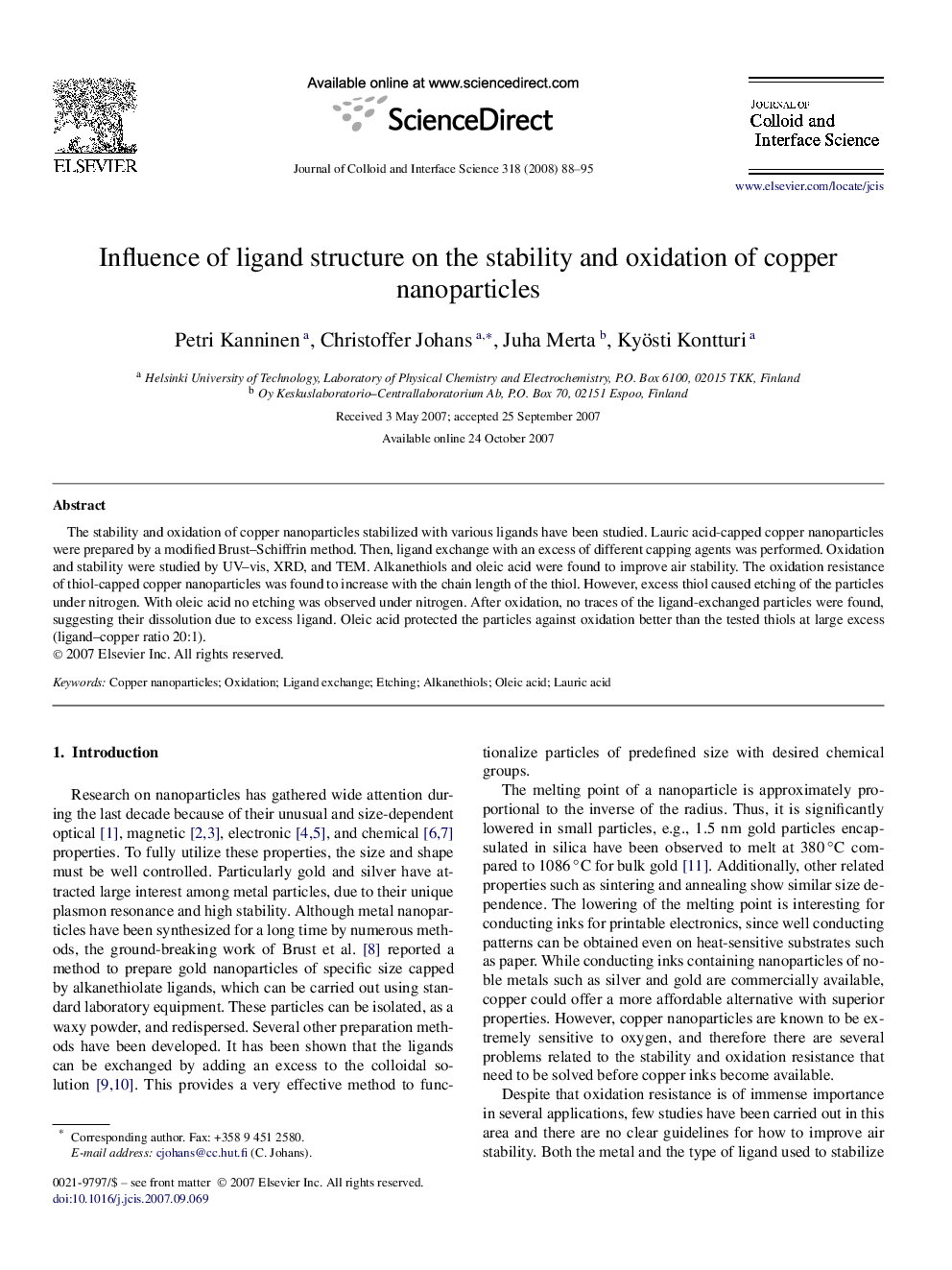| Article ID | Journal | Published Year | Pages | File Type |
|---|---|---|---|---|
| 611727 | Journal of Colloid and Interface Science | 2008 | 8 Pages |
The stability and oxidation of copper nanoparticles stabilized with various ligands have been studied. Lauric acid-capped copper nanoparticles were prepared by a modified Brust–Schiffrin method. Then, ligand exchange with an excess of different capping agents was performed. Oxidation and stability were studied by UV–vis, XRD, and TEM. Alkanethiols and oleic acid were found to improve air stability. The oxidation resistance of thiol-capped copper nanoparticles was found to increase with the chain length of the thiol. However, excess thiol caused etching of the particles under nitrogen. With oleic acid no etching was observed under nitrogen. After oxidation, no traces of the ligand-exchanged particles were found, suggesting their dissolution due to excess ligand. Oleic acid protected the particles against oxidation better than the tested thiols at large excess (ligand–copper ratio 20:1).
Graphical abstractLauric acid capped copper nanoparticles are ligand-exchanged with oleic acid and thiols. Oxidation of the nanoparticles is studied by following the Cu(O) plasmon absorbance.Figure optionsDownload full-size imageDownload as PowerPoint slide
